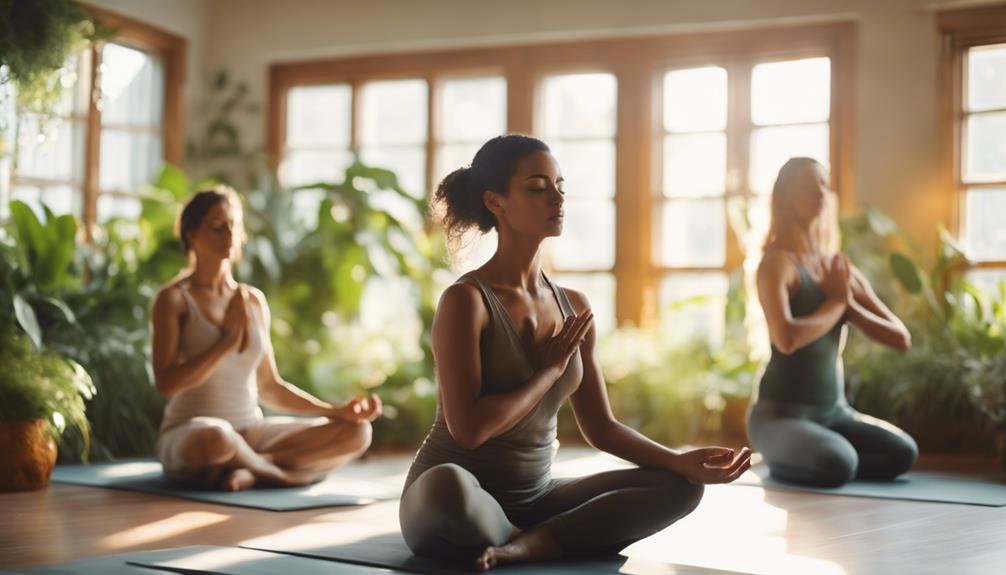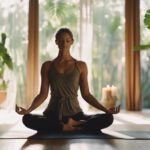In recent years, yoga has transcended its traditional practice to become a popular subject for photography. Whether for personal branding, social media, or artistic expression, capturing the essence of yoga through photographs requires careful selection of poses, attention to detail, and a creative approach. This article will guide you through the various elements that contribute to successful yoga photoshoots, from pose selection to lighting techniques, ensuring that your photographs reflect the beauty and grace of your practice.
As you embark on your journey to create stunning images, it’s vital to understand how different poses can convey various themes and emotions. The right pose can elevate your photos from ordinary to extraordinary, making it essential to choose wisely. With an array of options available, this guide will help you navigate through the nuances of yoga photography to achieve visually striking results that resonate with your audience.Yoga Delafield WiMachine Yoga
1. Introduction to Yoga Poses for Perfect Photoshoots
Yoga poses are not only beneficial for physical and mental well-being; they also serve as expressive forms of art, particularly when captured in photographs. The fluid movements and intricate postures lend themselves well to aesthetics, creating a harmonious blend of strength and flexibility. By focusing on specific poses, you can highlight your skills, convey a message, or capture the tranquility of the practice.
Moreover, the growing trend of wellness and mindfulness has made yoga photography increasingly relevant. As individuals seek to showcase their journeys and inspire others, mastering the art of yoga photography becomes essential. This introduction sets the stage for understanding how to select poses that will not only look good in photos but also encapsulate the spirit of yoga itself.
2. Choosing the Right Yoga Poses for Your Theme
When preparing for a photoshoot, consider the theme or message you want to convey. Different poses evoke various emotions and atmospheres, so it’s important to align your choices with your vision. For example, if you’re aiming for a tranquil and serene vibe, poses like Child’s Pose or Lotus Pose may be appropriate. Conversely, if your goal is to express strength and empowerment, consider poses such as Warrior II or Handstand.
Another factor to consider is the setting of your shoot. Outdoor locations can lend themselves to dynamic poses that reflect nature, while indoor settings may call for more grounded or intimate poses. Ultimately, the right pose should harmonize with the environment, enhancing the overall aesthetic and narrative of your photographs.
3. Popular Yoga Poses That Photograph Well
Certain yoga poses are renowned for their visual appeal and adaptability in photographs. For instance, Tree Pose (Vrksasana) is an excellent choice for showcasing balance and calm, while Downward-Facing Dog (Adho Mukha Svanasana) highlights strength and elongation of the body. Additionally, poses like Bridge (Setu Bandhasana) and Cobra (Bhujangasana) can create striking shapes that catch the eye.
Moreover, inversions such as Headstand (Sirsasana) and Handstand (Adho Mukha Vrksasana) not only display advanced skill but also create dramatic lines and angles that are visually captivating. Selecting a combination of these poses will ensure a diverse portfolio that reflects a range of emotions and experiences within your yoga practice.
4. Tips for Preparing Your Body for Photoshoot Poses
To ensure that you look your best during a yoga photoshoot, proper preparation is crucial. Start by warming up your body with a gentle flow to enhance flexibility and reduce the risk of injury. Poses such as Downward Dog, Cat-Cow, and gentle twists can help to open up your muscles and joints, allowing for a wider range of motion when you hit your final poses.
Additionally, consider the alignment and form of each pose prior to the shoot. Practicing the poses in front of a mirror can help you identify any areas that may need adjustment. Pay attention to your breath and maintain a steady rhythm, as this will not only enhance your performance but also contribute to a more relaxed appearance in the final photographs.
5. The Importance of Lighting in Yoga Photography
Lighting is a critical component in photography, often making the difference between a good photo and a great one. Natural light, especially during the golden hour (shortly after sunrise or before sunset), creates a soft and flattering effect that enhances the beauty of your poses. Experimenting with backlighting can create an ethereal glow, while side lighting can add depth and dimension to your images.
If you’re shooting indoors, consider the positioning of windows and lamps to maximize natural light. Avoid harsh overhead lighting, which can create unflattering shadows. Using reflectors can also help to bounce light onto your subject, further enhancing the visual quality of your photos. Overall, understanding how to manipulate light will significantly elevate the quality of your yoga photography.
6. How to Find the Best Angles for Your Yoga Poses
Finding the right angle is essential for capturing the essence of your yoga poses. A few different perspectives can dramatically change the impact of your photographs. Generally, shooting from a lower angle can create a sense of grandeur and highlight the majestic nature of certain poses, while shooting from above may convey vulnerability and openness.
Experimenting with angles is vital; try taking shots from the side, front, and even behind the pose. This variety can help capture the unique shapes and lines created by your body, resulting in dynamic and engaging photographs. Don’t hesitate to move around your subject, exploring different vantage points to discover which angles resonate best with the poses you are showcasing.
7. Incorporating Props for Dynamic Yoga Photos
Props can add an extra layer of creativity and interest to your yoga photos. Items such as blocks, straps, and blankets not only assist with form but can also be used to enhance the visual narrative of your images. For example, using a block in a one-legged pose can create intriguing shapes and lines, while a strap can highlight flexibility and control.
Additionally, natural elements like stones, flowers, or textiles can serve as props that contribute to the overall aesthetic of your shoot. Incorporating these elements can help create a more dynamic composition and tell a story beyond the yoga pose itself, adding depth and intrigue to your photographs.
8. Common Mistakes to Avoid During Yoga Photoshoots
While preparing for a yoga photoshoot, it’s easy to fall into certain traps that can diminish the quality of your images. One common mistake is rushing through poses without fully embodying them. Take time to settle into each pose and feel its energy; this will reflect in your expressions and overall presence in the photos.
Another pitfall is neglecting the background. A cluttered or distracting background can take attention away from the subject. Make sure to choose locations that complement your poses and theme, ensuring that the focus remains on the beauty of your practice. Being mindful of these mistakes will help create a more polished and professional appearance in your photographs.
9. Post-Photoshoot: Stretching and Recovery Techniques
After an invigorating photoshoot, it’s crucial to focus on recovery and stretching. Engaging in gentle post-shoot stretches can help alleviate muscle tension and restore flexibility. Poses such as Pigeon Pose, Forward Fold, and gentle backbends can aid in recovery and prevent soreness.
Additionally, consider integrating restorative practices such as yoga nidra or guided meditation to ground yourself after the dynamic energy of the shoot. Taking time for recovery not only supports your physical body but also allows you to reflect on your experience, fostering a deeper connection to your practice and the art of yoga photography.
10. Conclusion: Capturing the Essence of Yoga in Photos
In conclusion, capturing the beauty of yoga through photography involves a blend of skill, creativity, and mindfulness. By selecting the right poses, paying attention to lighting, and being aware of angles, you can create images that reflect the essence of your practice. Incorporating props and avoiding common pitfalls will further enhance the visual appeal of your yoga photos.
Ultimately, successful yoga photography goes beyond just capturing a moment; it tells a story, evokes emotions, and inspires others. By embracing these techniques and tips, you’ll not only improve your photography skills but also deepen your connection to the practice of yoga itself.
With the right approach and preparation, your yoga photos can become a beautiful representation of your journey. As you explore the world of yoga photography, remember to enjoy the process and allow your authentic self to shine through. Whether you’re sharing your images online or creating a personal keepsake, the goal is to capture the essence of yoga and inspire others along the way.


